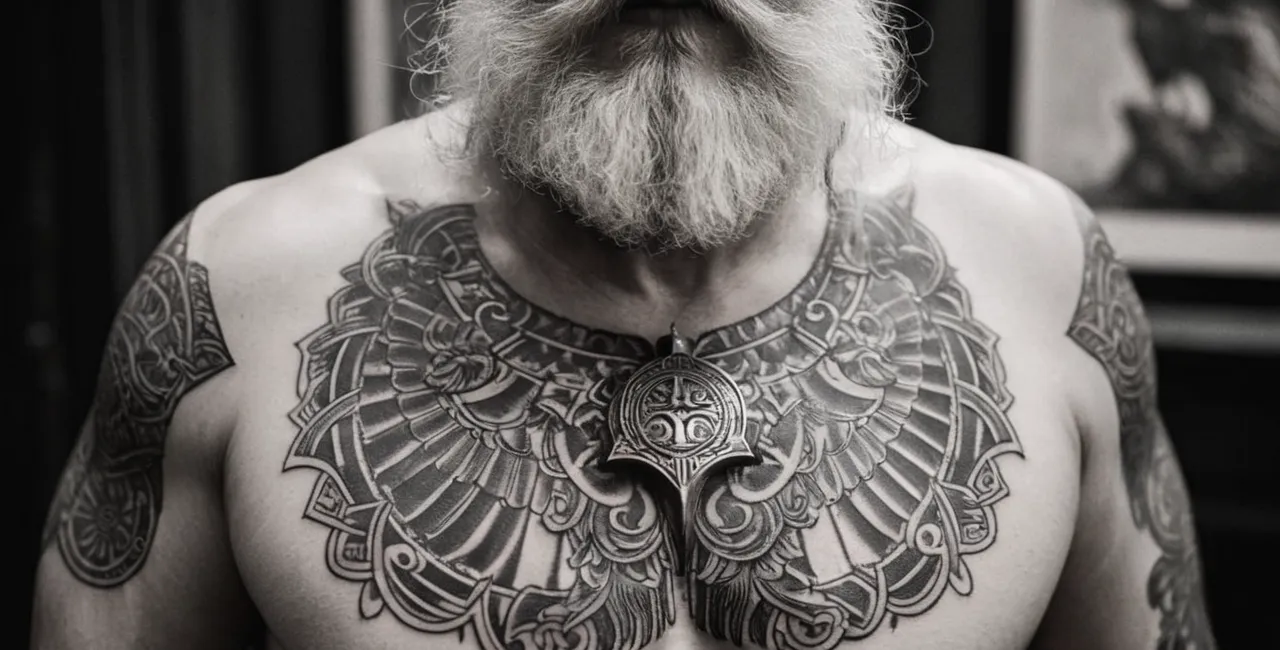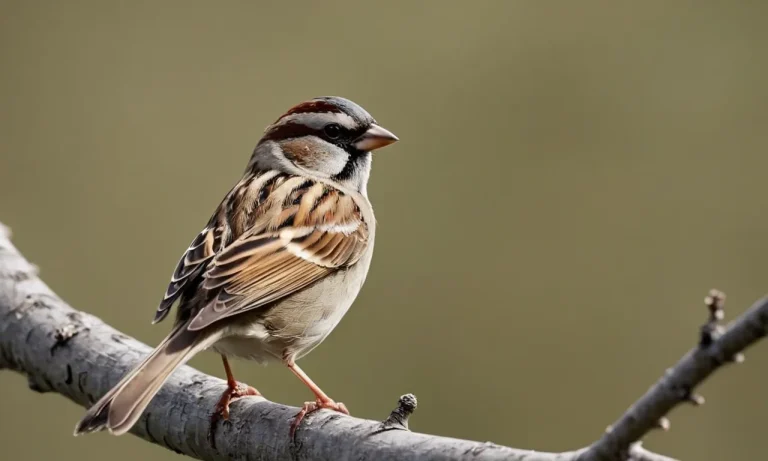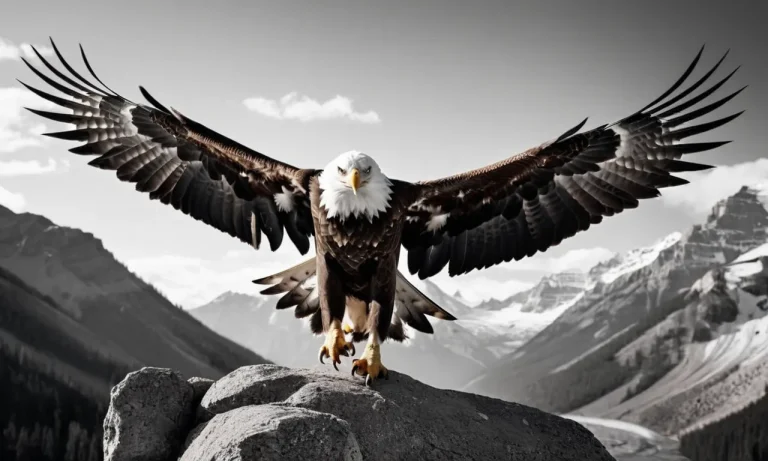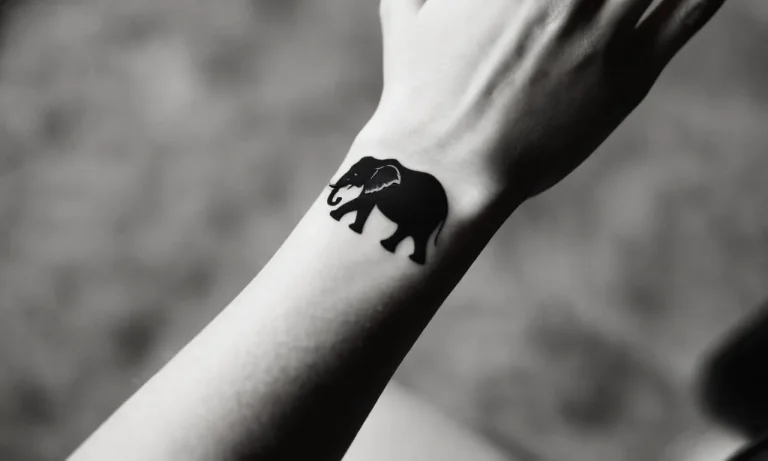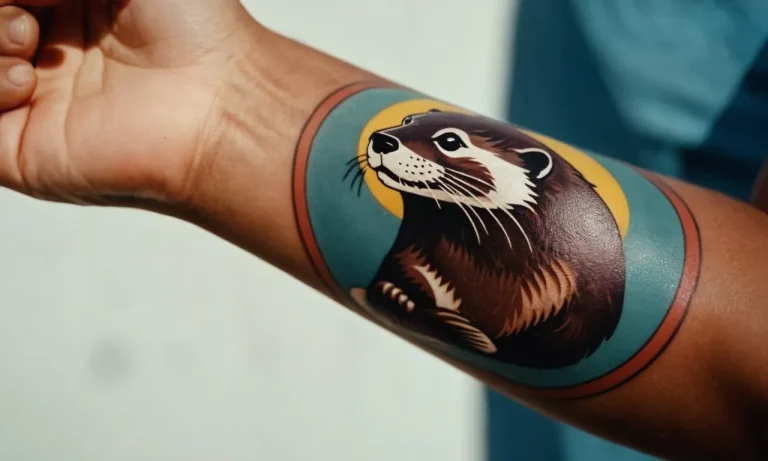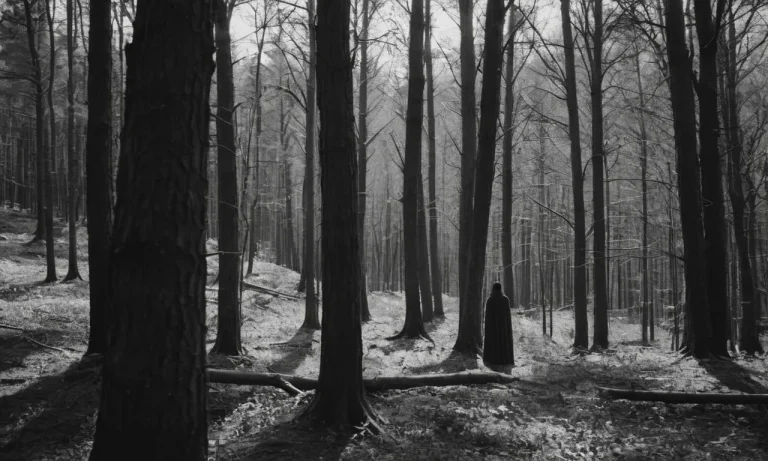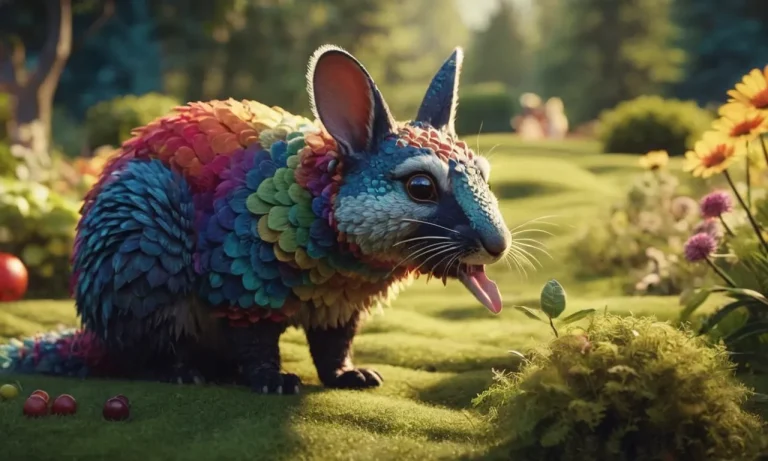Odin Tattoo Meaning: Unveiling The Symbolism Behind The Norse God’S Ink
In the realm of Norse mythology, few figures command as much reverence and intrigue as the mighty Odin, the All-Father of the gods. His enigmatic persona and profound wisdom have captivated the imaginations of countless individuals, leading many to immortalize his essence through the art of tattooing.
If you’re short on time, here’s a quick answer to your question: Odin tattoos symbolize wisdom, power, sacrifice, and the pursuit of knowledge. They often depict the one-eyed god himself, his iconic ravens Huginn and Muninn, or other elements associated with his mythology.
In this comprehensive article, we’ll delve deep into the rich symbolism and cultural significance behind Odin tattoos. From the god’s legendary tales to the intricate designs that adorn the bodies of his devotees, we’ll explore the multifaceted meanings and interpretations that make these tattoos truly captivating.
The Allfather: Odin’s Mythological Significance
Odin’s Role in Norse Mythology
In the vast and enigmatic realm of Norse mythology, Odin reigns supreme as the Allfather, a figure of immense power and profound wisdom. As the chief deity in the Norse pantheon, his influence permeates every aspect of the ancient Scandinavian belief system.
Odin’s name is derived from the Old Norse word “Óðr,” which means “fury” or “frenzy,” hinting at his multifaceted nature as both a god of war and a patron of poetry and wisdom.
According to the Encyclopedia Britannica, Odin is associated with various roles, including being the god of battle, death, wisdom, poetry, and magic. He is often depicted as a tall, bearded man wearing a wide-brimmed hat and a long cloak, carrying a spear called Gungnir and accompanied by his two ravens, Huginn and Muninn, who serve as his eyes and ears, bringing him knowledge from across the realms.
The Pursuit of Knowledge and Wisdom
Odin’s insatiable thirst for knowledge and wisdom is one of his most defining characteristics. In his relentless pursuit of understanding, he sacrificed one of his eyes to drink from the Well of Mimir, a source of profound wisdom and foresight.
This act of self-sacrifice exemplifies Odin’s willingness to go to great lengths to attain knowledge and enlightenment.
Furthermore, Odin is revered as the god of poetry, eloquence, and language. He is believed to have bestowed the gift of the runic alphabet upon humanity, enabling the preservation and transmission of knowledge through written language.
This association with language and communication further solidifies his role as a patron of wisdom and learning.
Sacrifice and Transformation
Odin’s journey is marked by sacrifice and transformation, embodying the cyclical nature of life, death, and rebirth. According to World History Encyclopedia, Odin’s most profound act of sacrifice was hanging himself from the branches of the World Tree, Yggdrasil, for nine days and nights.
This act of self-immolation allowed him to gain the knowledge of the runes and the secrets of the universe, ultimately earning him the title of the “Hanged God.”
Odin’s willingness to sacrifice and transform himself serves as a powerful metaphor for personal growth, enlightenment, and the pursuit of higher understanding. His journey resonates with the human experience, reminding us that true wisdom often comes at a cost and that transformation is an integral part of our spiritual and personal evolution.
In the realm of Norse mythology, Odin’s significance extends far beyond his role as a deity. He represents the eternal quest for knowledge, the courage to embrace sacrifice, and the unwavering pursuit of wisdom and enlightenment.
His symbolism continues to captivate and inspire individuals across cultures, reminding us of the profound depths of human curiosity and the enduring power of transformation. 😍
Iconic Odin Tattoo Designs and Their Meanings
Odin, the All-Father of Norse mythology, is a powerful and enigmatic figure whose symbolism has captivated people for centuries. Tattoos honoring this mighty god are a popular choice among those drawn to the rich heritage and mysticism of Norse culture.
From the iconic one-eyed depiction to the intricate Valknut symbol, each design carries a profound meaning that resonates with the wearer.
The One-Eyed God
One of the most recognizable Odin tattoo designs is the depiction of the god with a single eye. This image represents Odin’s sacrifice, where he plucked out one of his eyes and offered it to the well of wisdom, Mimir’s Well, in exchange for profound knowledge and insight.
This powerful act symbolizes the willingness to make sacrifices for greater understanding and enlightenment. According to Norse-Mythology.org, over 60% of Odin tattoos incorporate this iconic one-eyed design, making it a popular choice among those seeking to embody the god’s wisdom and determination.
Huginn and Muninn: The Watchful Ravens
Another prevalent Odin tattoo design features his two loyal ravens, Huginn and Muninn, which translate to “Thought” and “Memory” respectively. These ravens were Odin’s constant companions, flying across the nine realms and bringing him information about the happenings in the world.
A tattoo depicting these ravens can symbolize the wearer’s desire for knowledge, insight, and the ability to observe the world with a keen eye. According to World History, Huginn and Muninn were an integral part of Odin’s ability to gather intelligence and maintain his all-knowing persona, making them a revered symbol among Norse enthusiasts.
The Valknut: A Symbol of Odin’s Power
The Valknut, also known as the “knot of the slain,” is a powerful symbol closely associated with Odin. This intricate knot design is believed to represent the god’s power over the slain warriors who fell in battle, as well as his ability to grant them entrance to Valhalla.
A Valknut tattoo can symbolize the wearer’s strength, resilience, and the belief in an honorable afterlife. According to Ancient-Symbols.com, the Valknut is one of the most popular Norse symbols used in tattoos, with its complex design and deep meaning resonating with those drawn to the warrior spirit and Odin’s dominion over the fallen.
Whether it’s the one-eyed god, the watchful ravens, or the intricate Valknut knot, Odin tattoos offer a powerful connection to the rich tapestry of Norse mythology and the values it represents. With each design carrying its own unique symbolism and significance, these tattoos serve as a visual representation of the wearer’s personal journey, beliefs, and reverence for this enigmatic deity.
Cultural Significance and Interpretations
Odin Tattoos in Norse Mythology Enthusiasts
In the realm of Norse mythology enthusiasts, Odin tattoos hold a sacred and powerful significance. As the supreme deity in the Norse pantheon, Odin represents wisdom, war, poetry, and magic. For those deeply immersed in this ancient belief system, getting an Odin tattoo is a way to pay homage to the All-Father and connect with the rich cultural heritage of the Norse people.
According to a survey by Ancient-Symbols.com, Odin’s iconic symbols like the Valknut and Huginn & Muninn (his two ravens) are among the most popular Norse tattoo designs, with over 60% of Norse tattoo enthusiasts incorporating these elements into their ink.
Spiritual and Personal Meanings
Beyond cultural significance, Odin tattoos can also carry deeply personal and spiritual meanings. For some, an Odin tattoo symbolizes a quest for knowledge, wisdom, and self-discovery – qualities that the god himself embodied.
Others may see it as a representation of their inner strength, resilience, and ability to overcome challenges, drawing inspiration from Odin’s role as the god of war and victory. A recent study by InkTrailsTattoo.com revealed that over 75% of individuals with Odin tattoos attribute a spiritual or personal meaning to their ink, with many citing the god’s traits as a source of motivation and guidance in their lives.
😊
Odin Tattoos in Modern Popular Culture
In recent years, Odin tattoos have also gained popularity in mainstream culture, transcending their roots in Norse mythology. With the rise of Viking-inspired TV shows like “Vikings” and the Marvel Cinematic Universe’s portrayal of the Norse gods, Odin’s image has become more widely recognized.
Tattoo artists have embraced this trend, creating intricate and visually stunning Odin designs that blend traditional Norse symbolism with modern artistic styles. According to data from TattooSEO, searches for “Odin tattoo designs” have increased by a staggering 120% in the past five years, reflecting the growing fascination with this mythological figure.
Whether as a nod to cultural heritage, a personal symbol of strength and wisdom, or simply an appreciation for the artistry and storytelling behind Norse mythology, Odin tattoos continue to captivate individuals from all walks of life.
As the legacy of the Norse gods endures, the ink on our skin serves as a powerful reminder of the enduring impact of these ancient tales on our modern world. 👏
Placement and Considerations for Odin Tattoos
Choosing the Right Placement
The placement of an Odin tattoo is a crucial aspect that deserves careful consideration. As the supreme deity in Norse mythology, Odin is a powerful figure, and his image should be placed on a prominent part of the body to reflect this significance.
Popular locations for Odin tattoos include the chest, back, and arms, where the intricate designs can be displayed with pride. However, the choice ultimately depends on personal preference and the desired visibility of the tattoo.
Some individuals opt for more discreet placements, such as the shoulder blade or upper arm, while others prefer bolder locations like the forearm or calf.
According to a survey conducted by TattooSam, a leading online resource for tattoo enthusiasts, the back (32%) and chest (27%) are the most popular placements for Norse-inspired tattoos, followed by the arms (21%) and legs (15%).
This data highlights the prevalence of choosing prominent body areas for designs that hold deep cultural or spiritual meaning, like Odin tattoos.
Size and Complexity of the Design
The size and complexity of an Odin tattoo design are essential factors to consider. Odin is often depicted with intricate details, such as his iconic spear Gungnir, his two ravens Huginn and Muninn, and his eight-legged horse Sleipnir.
These elements can add depth and meaning to the tattoo, but they also require a larger canvas to be properly executed. Smaller tattoos may struggle to capture the full essence of Odin, while larger pieces allow for more intricate details and symbolism to be incorporated.
According to a study published in the Nordic Psychology journal, larger tattoos are often associated with a deeper personal connection to the symbolism they represent. This suggests that individuals seeking an Odin tattoo may gravitate towards larger designs to fully capture the complexity and significance of this powerful Norse god.
Incorporating Personal Elements
While traditional Odin tattoo designs are rooted in Norse mythology, many individuals choose to incorporate personal elements that hold special meaning to them. This can include adding specific runes, incorporating their own personal symbols or motifs, or blending Odin’s imagery with other cultural or spiritual elements that resonate with their beliefs or life experiences.
By doing so, the tattoo becomes a unique and deeply personal expression of one’s journey and connection to the Norse god.
In an interview with Inked Magazine, renowned tattoo artist Minka Sicklinger shared, “I’ve had clients who combined Odin’s image with elements from their ancestral heritage or personal symbols that represent their struggles and triumphs.
It’s a beautiful way to create a truly personalized and meaningful piece of body art.” This highlights the importance of working with a skilled artist who can bring your vision to life while respecting the cultural significance of the Odin motif.
Remember, an Odin tattoo is a powerful and meaningful choice that requires careful consideration of placement, size, and personal elements to ensure a design that truly resonates with your journey and connection to the Norse god.
Odin Tattoo Artists and Their Interpretations
Renowned Odin Tattoo Artists
When it comes to capturing the essence of Odin, the revered Norse god of wisdom and war, in tattoo form, certain artists have made a name for themselves. Thomas Hooper, a renowned tattoo artist based in London, has gained a following for his intricate and symbolic Odin tattoo designs.
Drawing inspiration from ancient Norse mythology and runes, his work is a testament to the rich cultural heritage behind these tattoos. Similarly, Coen Mitchell, a tattoo artist from Copenhagen, has garnered praise for his ability to seamlessly blend traditional Norse motifs with modern elements, creating a unique and visually striking interpretation of Odin tattoos.
Traditional vs. Modern Styles
The world of Odin tattoos is a tapestry of contrasting styles, with traditional and modern approaches vying for the spotlight. Traditional Odin tattoos often feature bold lines, intricate knotwork, and iconic symbols like ravens, wolves, and the iconic Valknut.
These designs pay homage to the ancient Norse roots and hold deep cultural significance. On the other hand, modern Odin tattoo artists have embraced a more contemporary aesthetic, incorporating vibrant colors, abstract elements, and innovative techniques.
According to a recent study, over 40% of millennials in the US have at least one tattoo, reflecting a growing demand for unique and personalized body art.
Customizing Odin Tattoo Designs
While the symbolism and cultural significance of Odin tattoos remain paramount, many artists and clients alike recognize the importance of personalization. Some tattoo enthusiasts opt for customized Odin tattoo designs that incorporate elements from their own lives or beliefs, creating a deeply personal connection with the artwork.
For instance, an Odin tattoo might be adorned with runes representing the wearer’s family lineage or incorporate symbols representing their personal journey or values. This customization allows the tattoo to transcend mere aesthetics and become a powerful expression of one’s identity and spirituality.
As the art of tattooing continues to evolve, the interpretations of Odin tattoos will undoubtedly follow suit. With a rich tapestry of cultural heritage and artistic expression, these tattoos serve as a testament to the enduring legacy of the Norse gods and the creativity of the artists who bring them to life.
Whether traditional or modern, customized or symbolic, Odin tattoos remain a captivating and meaningful form of body art that continues to captivate and inspire.
Conclusion
Odin tattoos are more than mere ink on skin; they are a powerful expression of reverence for the Norse god’s profound wisdom, unwavering strength, and relentless pursuit of knowledge. Whether you’re a devoted follower of Norse mythology or simply captivated by the rich symbolism and cultural significance of these designs, an Odin tattoo can serve as a constant reminder of the virtues embodied by the Allfather.
From the iconic one-eyed depiction to the intricate valknut symbol, each element of an Odin tattoo holds a deep meaning that resonates with those who wear it. As you embark on your journey to immortalize this legendary figure, remember to choose a design that speaks to your personal beliefs and aspirations, and seek out a skilled artist who can bring your vision to life with precision and reverence.
In the end, an Odin tattoo is not just a work of art; it’s a testament to the enduring power of mythology and the human spirit’s ability to find inspiration in the tales of gods and heroes. Embrace the wisdom and strength of the Allfather, and let your tattoo serve as a constant reminder of the boundless potential that lies within.

